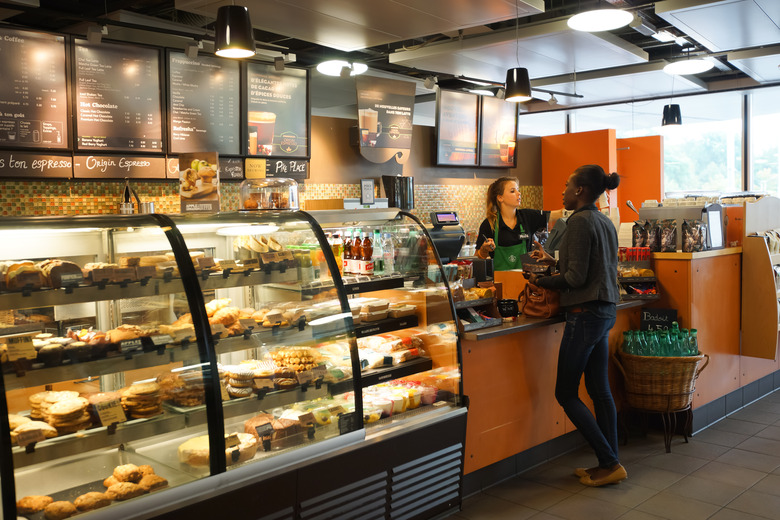The Scary Reason Starbucks' Food Looks Identical No Matter Where You Are
No matter if you're in Arkansas, California, Canada, or Japan, you can count on Starbucks' food to look exactly the same. There's something mildly comforting about it: When you order your usual egg sandwich, you get your usual egg sandwich. It's predictable. Standard.
And standard means standardized — there are rules, regulations, and a whole slew of legal jargon surrounding the appearance, maintenance, and preparation of Starbucks food. It's very technical. It has to be; if it wasn't, the safety of your pristinely-crafted Starbucks meal would be severely compromised.
So why does the food look the same anywhere you go? You might already know this one: The food is frozen. The ethics of this mode of service are controversial. Your Starbucks meal has been sliced, diced, and sautéed somewhere far, far away from the store you're buying it from.
After the large facility cooks the food, they freeze it and seal it in plastic containers for transport. These containers must be kept at very specific temperatures and transported through very specific routes in order to make it to the freezer nestled in the back of your local Starbucks. In fact, a detailed account of their food transportation standards and expectations is publically available online. You have to applaud the international coffee chain for their transparency.
But frozen food transportation is honestly pretty risky.
According to an assessment done by the International Association of Food Protection, frozen food transportation comes with a myriad of risks including "lack of security, improper holding practices for food products awaiting shipment or inspection, improper temperature control, cross-contamination, and improper loading."
Among the groups with the largest risk factor, "ready-to-eat foods" made the cut.
Additionally, the stretch of time between when your food was cooked and when it's served to you is completely variable. You could be eating food cooked weeks ago or months ago — depending on the popularity of the item and how long it's been sitting in Starbucks' back kitchen.
Once Starbucks' supplier freezes the meals, they mark them with an expiration date. In 2016, a Listeria-related recall was issued on sandwiches distributed in March that were marked with an expiration date in August. That's six months later.
As of now, no major outbreaks or consequences have occurred from Starbucks food. But with all the chaos happening at Chipotle — a company that uses similar food transport and delivery methods of freezing and thawing — we just think it's wise to be aware.
Starbucks does not have any plans in the works to change their method of food service. It wouldn't be financially lucrative to invest in installing a full kitchen at every location expected to serve food. Instead of making this major alteration in food strategy, they're making changes to their menu to better align with these frozen methods. One of their newest menu options, Sous Vide Egg Bites, was specifically designed for optimal taste outcomes after frozen shipment. They're cooked all the way through at a very precise temperature — a temperature that can be easily reenacted later, even after freezing. The eggs never become overcooked.
Food poisoning from Starbucks does occur, and is reported by consumers online. But there hasn't been anything too serious or chronic, so let's just hope Starbucks doesn't go down in history as another crazy food scare.
